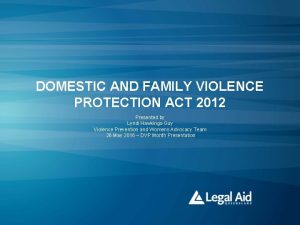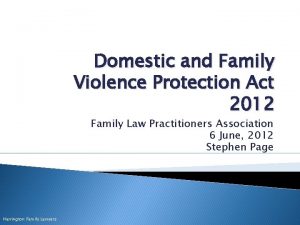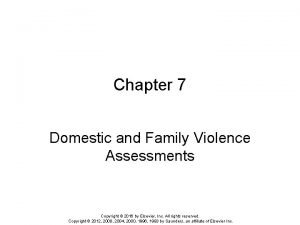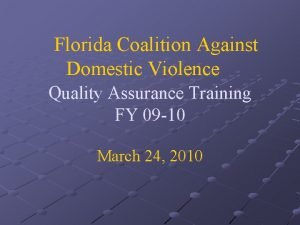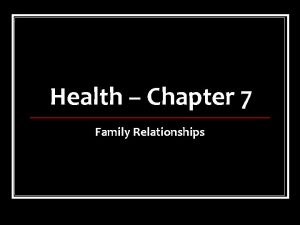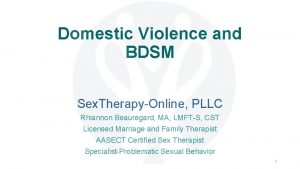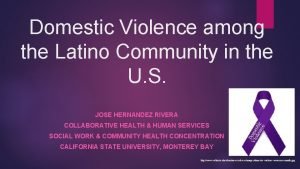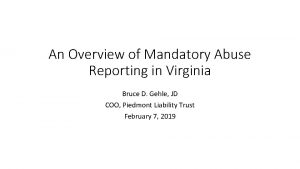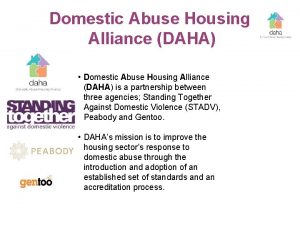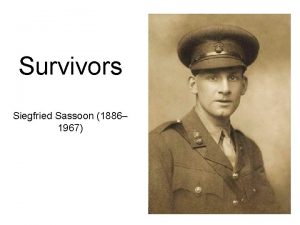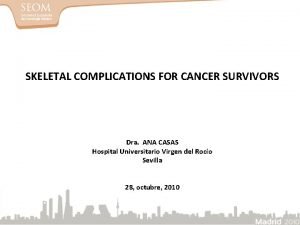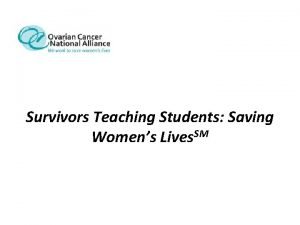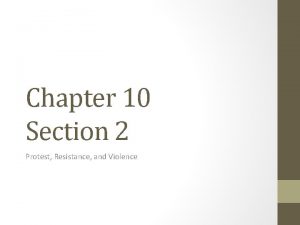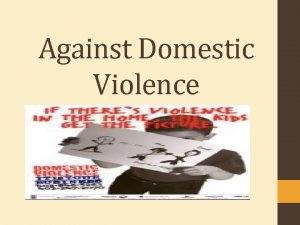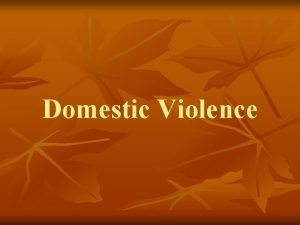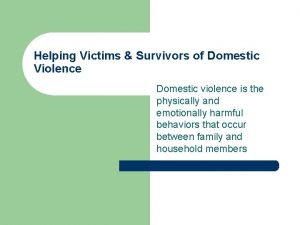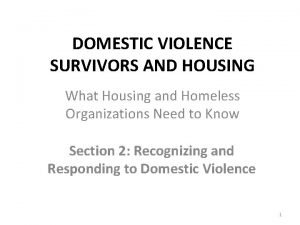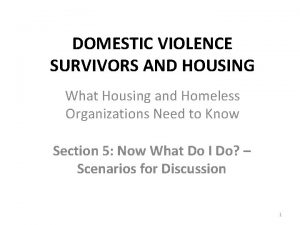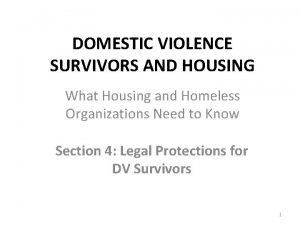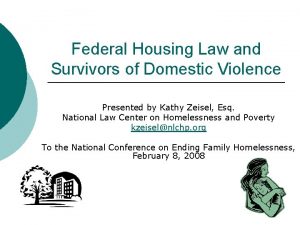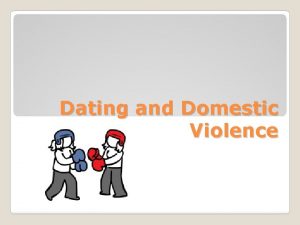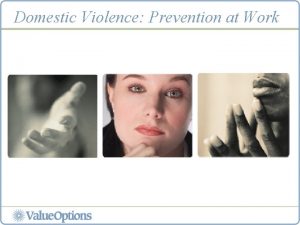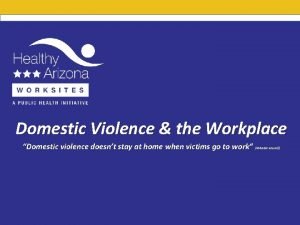DOMESTIC VIOLENCE SURVIVORS AND HOUSING What Housing and



















- Slides: 19

DOMESTIC VIOLENCE SURVIVORS AND HOUSING What Housing and Homeless Organizations Need to Know Section 3: Domestic Violence Advocacy 1

Domestic Violence Advocacy • • Trauma Informed, Survivor Driven Strength Based Emotional & Physical Safety Oriented Voluntary Services Approach – Self Directed 2

Confidentiality: The Cornerstone • Federally funded programs (VAWA, HUD) have statutory requirements to protect survivor confidentiality • Best practice is to afford all survivors basic safeguards of confidentiality, regardless of statute or funding (ex. Release of Information) • Examine all program aspects for breaches of confidentiality – use of technology, sharing paperwork, using personally identifying info. in public, etc. • When in doubt, ask her. Which info. is OK to share? Is it OK to leave a message? Should we have a code word? 3

Issues That Can Challenge Stabilization • • • Trauma impacts (survivor and children) Ongoing legal issues Fears about child custody, deportation Stalking-prone abuser Interrupted/sabotaged employment history Criminal record Chemical dependency Bad credit, inexperience with handling money Pets often part of the household 4

Keying in on Trauma • Trauma: When external threat overwhelms coping resources; for survivors, an ongoing state of being • Brain becomes hyper-vigilant – scanning for danger, sensing/reacting to perceived threat • PTSD symptoms are seen as the behavioral manifestation of all of these changes • Trauma responses are completely normal for a human being who’s adapted to a traumatizing life – BUT – may interfere with survivors’ ability to enact patterns and behaviors it takes to maintain housing • Trauma also affects how people approach services 5

How Trauma May Show up • • • Difficulty with emotional regulation Hyper-arousal, flashbacks, nightmares, startle reaction Memory and concentration problems Pain, sleep disturbances, illness, substance abuse issues Short attention span; easily distracted Slowed thinking, difficulty with decisions Intrusive thoughts, confusion Changed sense of self, others, and the world Loss of sense of time and space Trouble with abstract concepts, complex directions 6

Survivors May Need Advocacy Around Trauma may be mistaken for: • • Apathy Poor self-worth Lack of follow-through, unreliability Disinterest in getting help Uncooperative or oppositional manner “Spaciness” Poor judgment, inability to make good choices Deeper mental health issues 7

Historical Trauma • Also called multi-generational trauma or trans -generational trauma • Trauma that is passed on from one generation to the next because of psychological, social, and environmental traumatic conditions and stressors that are unresolved within a family system, community, or population 8

Destruction of Culture • The trauma inflicted on people was also directed at the removal and destruction of culture. • Language, spirituality, sense of family structure were systematically destroyed. • Boarding schools were a place that systematically attempted to destroy the family system and the sense of family. • The destruction of culture left many people empty and searching for their soul. 9

Why is this important? • Many of the problems we face in families and communities can be directly linked to the multi-generational/trans-generational trauma. • For each generation that doesn’t address historical trauma, the trauma effects carry forward to the next generation. 10

Internalized Oppression Violence gone inward; when violence gets internalized we then see some of the following: 1. Addictive behaviors 2. Depression/suicidal ideation 3. Chronic physical problems such as diabetes, hypertension These life conditions can be interpreted as violence towards one’s self. 4. Loss of identity making it easier to commit violence towards one’s self or the ones closest to us. 11

Where do we go from here? • Interventions must include socio-historical factors • Community programs must insist on cultural competency, otherwise the historical trauma continues to be reinforced • People working in the community must know and demonstrate that they have competency to work in the community • Trans-generational trauma must be addressed by providers and they must take responsibility for their part in this history 12

How Can Your Program Help with Safety? • Have policies in place with your DV agency partner for emergent needs • Help the victim with other safe housing resources within your program or another program • Help the abuser with resources if s/he becomes homeless due to exclusion from the unit • Don’t judge or restrict the level of contact they might need to have with each other 13

Immediate Safety • Listen to the survivor and ask what s/he needs • If the abusive partner is also a resident or housing applicant, do not have safety-related conversations with him/her present • Remember that the victim may use violence— in self defense or to regain control over her/his life • Utilize your DV agency partnership—either as a referral or for consultation 14

Conversations • Safety planning is a process, not a one-time event or check list. • Safety planning is tailored to the survivor’s life and daily activities—each day may even be a little different. • Ask the survivor what the abuser’s power and control tactics are. • Survivor activities and abuser’s tactics will guide the safety planning process. 15

Understanding the Abuser’s Role • Does he have visitation? • Was he the primary babysitter/transportation, etc. ? • Support vs. safety vs. isolation • Is he sabotaging her efforts? 16

Long-Term Safety Planning Once a survivor has obtained alternate/transitional or permanent housing, maintaining safety remains a priority • • Safety at home and with children Financial safety and independence Safety on the job and in pubic settings Safety if I am using drugs or alcohol 17

Voluntary Services • Based on a philosophy and framework that emphasizes providing information and encouraging true choice • Also called Empowerment Model, Harm Reduction, etc. – term is less important than underlying principles and practices • Shelter/housing eligibility is NOT contingent upon accessing support services • Participant-driven and relationship-based • Intentionally focuses on whole person, including historical and relational context, not a singular issue or deficit 18

Common Misconceptions Voluntary Services means: • No rules, no expectations • A hands-off approach; participants always have to initiate contact • Participants will “sit around and do nothing” • Staff can never intervene, even in a crisis • No-one can ever be terminated from services • Never knowing if your program is ‘working’ 19
 Domestic and family violence protection act 2012
Domestic and family violence protection act 2012 S68r family law act
S68r family law act Chapter 7 domestic and family violence assessment
Chapter 7 domestic and family violence assessment Florida coalition against domestic violence
Florida coalition against domestic violence Three r's for stopping domestic violence
Three r's for stopping domestic violence Domestic violence kink
Domestic violence kink Domestic violence in the hispanic community
Domestic violence in the hispanic community Virginia mandatory reporting law domestic violence
Virginia mandatory reporting law domestic violence Domestic abuse housing alliance
Domestic abuse housing alliance Survivors by siegfried sassoon analysis
Survivors by siegfried sassoon analysis Dra survivors
Dra survivors Desert animals australia
Desert animals australia Survivors teaching students
Survivors teaching students Calciphylaxis survivors
Calciphylaxis survivors Modifiers of human acts examples
Modifiers of human acts examples Gandhi king and mandela what made non-violence work dbq
Gandhi king and mandela what made non-violence work dbq Chapter 9 resolving conflicts and preventing violence
Chapter 9 resolving conflicts and preventing violence Chapter 27 anger aggression and violence
Chapter 27 anger aggression and violence Chapter 10 section 2 protest resistance and violence
Chapter 10 section 2 protest resistance and violence Chapter 9 resolving conflicts and preventing violence
Chapter 9 resolving conflicts and preventing violence
